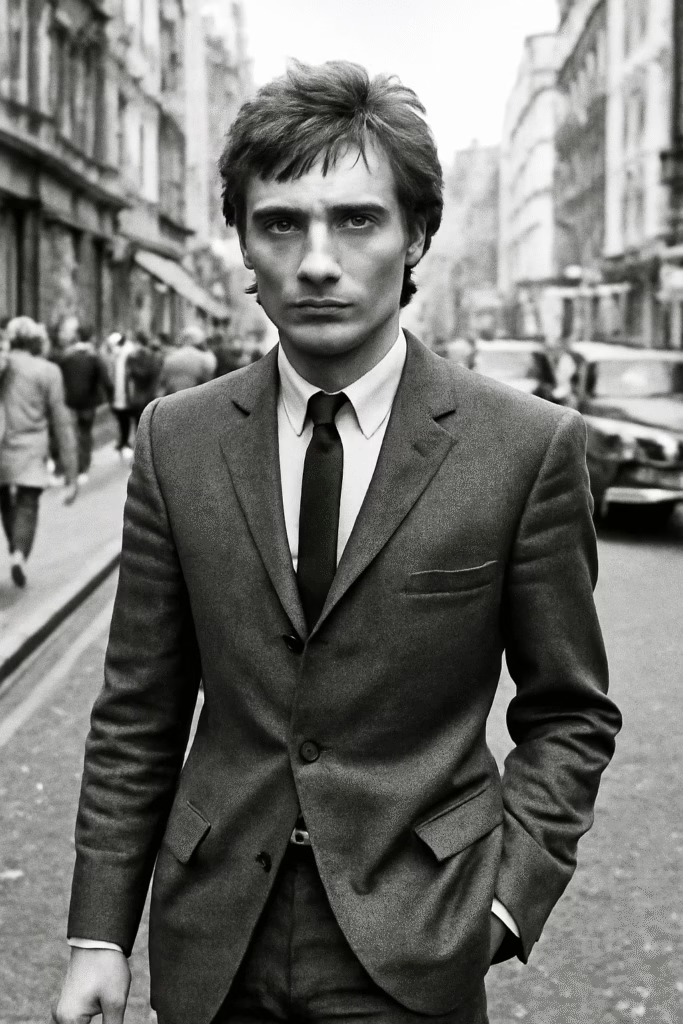Introduction
Terence Stamp remains at the forefront of cultural conversation in the USA for a simple business reason: audience attention gravitates toward clarity, craft, and charisma, and he offered all three for more than six decades. Following the August 2025 news of his passing at 87, interest in Terence Stamp movies accelerated as viewers explored or revisited titles from Billy Budd through The Limey to Priscilla Queen of the Desert.
Table of Contents
Electrifying Legacy-Terence Stamp’s Life Story Captures America’s Imagination
Long-lasting brands typically start with a resounding early victory. Billy Budd marked a turning point in Terrence Stamp’s career, earning him a nomination for the Academy Award and setting him on a course where accuracy and presence became his defining characteristics. Although the biography—East End origins, a backdrop of war, and a breakthrough in the 1960s—provides complexity, it was his performance toolkit—controlled intensity, a trustworthy countenance, and an economical delivery—that kept him going. These characteristics allowed Stamp to function in both mainstream and arthouse lanes without compromising identity.
When the family’s confirmation of his death reached major outlets, search behavior followed a familiar path. Queries for “Terence Stamp,” “Terence Stamp movies,” and “Terence Stamp Zod,” plus related terms like “Zod,” “General Zod,” and “Chancellor Valorum,” lifted in tandem with curated watchlists and editorial packages. The net effect was not just commemoration—it was onboarding, where first-time viewers met a catalog already optimized for discovery because the work is distinctive and consistent.
Unstoppable Impact
Why “Terence Stamp Zod” Still Rules Superhero Villainy General Zod showcases the performance model many modern franchises still chase: calm, articulate menace with an inner logic that makes the antagonist as compelling as the hero. In Superman (1978) and Superman II (1980), Stamp delivered a character built on control rather than noise, and that choice kept the portrayal fresh as filmmaking styles evolved. Audiences meeting his work today grasp the character instantly.
Editors consistently place Zod near the top of remembrances because a few seconds of footage communicate the archetype with complete clarity. It is efficient storytelling, and it travels well on every platform. Stamp’s later turn as the voice of Jor-El in Smallville opened another door into the Superman universe, introducing him to viewers who may have missed the films while reinforcing his connection to the franchise for those who knew him already.
Heartfelt Reinvention

The Bold Brilliance of Priscilla, Queen of the Desert. The Adventures of Priscilla, Queen of the Desert (1994)—surfaced frequently via Priscilla Queen of the Desert—illustrates a principle every creative understands: smart risk expands the brand. As Bernadette, Stamp chose restraint and respect over theatrics, allowing the character’s humanity to lead. That approach keeps the performance evergreen. Remembrances highlight that choice as an example of how careful decisions shape long-term audience trust and deepen emotional investment.
Today, when obituaries list the roles that define him, Priscilla sits beside Zod and the early classics—evidence that courage and care can coexist in a filmography and both pay dividends over time.
Magnetic Persona

Terence Stamp’s Swinging London Cool and Cultural Cachet. In the 1960s, Terence Stamp became a visual shorthand for British cool: clean lines, composed posture, and a gaze that seemed to edit the frame in real time. That image, strengthened by photography and fashion ties, circulated widely and shaped how American audiences read him onscreen—elegant, sharp, and a step ahead.
Coverage revisiting that era often notes how a minimal gesture could carry a scene. That economy continues to influence brand storytelling and visual direction because it reads clearly at any scale—from the cinema screen to the phone.
Fearless Choices
In discovery flows centered on terence stamp movies, a consistent arc appears. Billy Budd (1962) is the reputation starter.
- The Collector (1965) shows he can make quiet choices feel dangerous, a study in psychological tension rather than spectacle.
- Far From the Madding Crowd (1967) places him inside canonical literature, where screen presence must hold up against text with its own gravity.
- Theorem (1968) confirms his appetite for auteur frameworks and conceptual storytelling, the kind of work that builds long-tail credibility.
- The Adventures of Priscilla, Queen of the Desert (1994) is where warmth and intelligence meet; it broadens the audience without sacrificing precision.
- The Limey (1999) is a clinic in minimalism—proof that subtracting noise can increase voltage when the performance is aligned.
- Star Wars: The Phantom Menace (1999), with Stamp as Chancellor Valorum, illustrates how a precise presence can lend weight within a massive IP.
- Valkyrie (2008) maintains high-profile visibility in a historical frame where credibility matters as much as charisma.
- Last Night in Soho (2021) proves those core strengths translate cleanly into contemporary aesthetics.
Enduring Myth
The August 2025 confirmation of his passing triggered a sweep of U.S. tributes that framed his trajectory from 1960s figurehead to definitive Superman villain, then widened to showcase the artistic range that made both identities possible. Family statements pointed viewers back to the craft, encouraging programming that balances reverence with accessibility and lets the performances speak first. Roundups commonly position Billy Budd, The Collector, Terence Stamp as Zod in Superman II, and Bernadette in Priscilla, Queen of the Desert as an essential bracket—a compact primer that respects both newcomers and longtime admirers.
Contemporary directors and colleagues repeatedly call out his quiet rigor—gaze, voice, and posture—as the levers that made scenes land with force, which is why clips circulate so effectively. Those dynamics keep “Terence Stamp” and “General Zod” active as search terms, not just as memorial artifacts but as entries into a working catalog.
Positive Momentum—There is a repeatable operating logic to Stamp’s method.
Understatement turns the camera into an ally by clearing space for intention. Archetypes outperform stereotypes when intelligence and control anchor the character—General Zod being the proof point. Strategic risk, as with Bernadette in Priscilla Queen of the Desert, can reframe a career for the long term. Cross-franchise appearances—from Zod to Chancellor Valorum—compound relevance and allow new cohorts to enter at different nodes.
Emotional Power: Terence Stamp’s Voice, Eyes, and Presence
Ask why he lingers, and three elements recur. His eyes narrow the field until only intention remains. His voice slides between steel and solace—Terence Stamp’s Zod on one end, Bernadette on the other—without strain. His silhouette reads at a glance as a visual signature that cues audience expectations before a line is spoken.
Cultural Crossroads: Jean Shrimpton, Fashion, and Global Iconography.
The Terence Stamp story inevitably intersects with fashion and photography. Public memory often links him with Jean Shrimpton and the era’s creative circles, not as trivia but as context for why his image remains so potent. For marketers and storytellers, that association offers readymade iconography.
Business Acumen—Why Distributors and Streamers Push Terence Stamp Collections.
From a programming lens, the catalog is efficient. Terence Stamp movies naturally attract classic film fans; General Zod connects superhero communities; Chancellor Valorum engages Star Wars audiences; and Priscilla Queen of the Desert welcomes viewers who prioritize representation and character-driven storytelling.
Optimistic Outlook—The Terence Stamp Effect on Modern Performances
If there’s a single takeaway for actors and showrunners, it is that precision scales. Minimal gestures can carry emotional weight when framed correctly. Duality keeps characters alive in the viewer’s mind—menace with intelligence for General Zod, dignity with vulnerability for Bernadette. And a few iconic choices—a voice placement, a stillness, a silhouette—can make a character instantly legible. Those habits are visible across prestige TV and franchise cinema today.
Quick Guide: Essential Terence Stamp Roles to Watch Right Now
The most efficient on-ramp begins with General Zod in Superman II, with his presence in Superman as context, establishing the benchmark for franchise villainy and performance economy. Then, Priscilla Queen of the Desert experiences Bernadette’s warmth and backbone. Next, The Limey for a masterclass in minimalism. Return to Billy Budd for the origin point of the craft. Close with Chancellor Valorum in The Phantom Menace to see how calibrated presence adds institutional weight inside a galaxy-spanning story.
FAQs: Terence Stamp
- Q-What happened to Terence Stamp?
- A-He died at 87 in August 2025, with public confirmation that set off a new wave of interest and curated programming. Source: bbc+2 https://www.bbc.com/news/articles/c39d41g7nmlo
- Q-Why is “Terence Stamp Zod” so iconic?
- A-The role fuses composure with threat, creating an antagonist blueprint many franchises still admire and emulate. Source: nbcnews+1 https://www.nbcnews.com/news/obituaries/terence-stamp-obituary-rcna225460
- Q-Did Terence Stamp act in Star Wars?
- A-Yes. As chancellor valorum in Star Wars: The Phantom Menace (1999), he added gravitas to a crucial political role. Source: ddnews https://ddnews.gov.in/en/british-actor-terence-stamp-dies-at-87/
- Q-What are the must-watch terence stamp movies?
- A-Superman/Superman II, The Limey, priscilla queen of the desert, Billy Budd, The Collector, and Last Night in Soho frequently sit at the top of editorial recommendations. Source: firstpost+2 https://www.firstpost.com/entertainment/terence-stamp-british-actor-who-portrayed-general-zod-in-early-superman-films-dies-at-87-13925678.html
- Q-How are U.S. audiences reacting now?
- A-Ongoing spikes in search, watchlist adds, and short-form clip circulation suggest sustained curiosity and positive word of mouth. Source: npr+2 https://www.npr.org/2025/08/18/nx-s1-5505466/actor-terence-stamp-dies
For More Such Trending Topics: Keep Reading
Discover more from NewsBusters
Subscribe to get the latest posts sent to your email.

6 thoughts on “Triumphant Farewell: Reasons-Terence Stamp Still Dominates Pop Culture-2025”